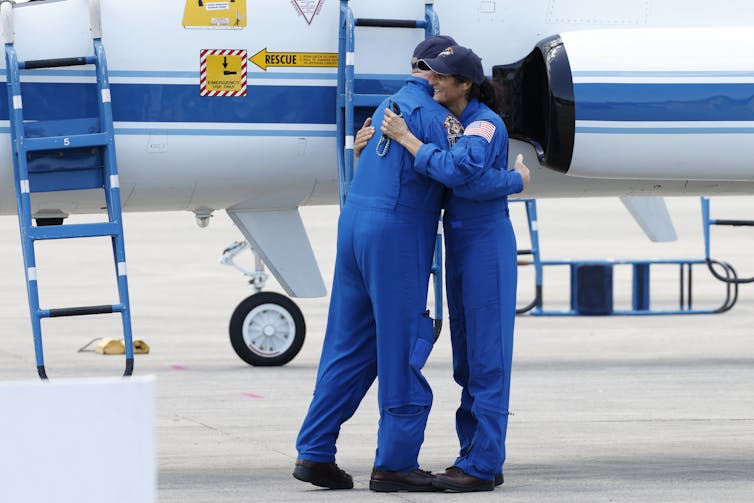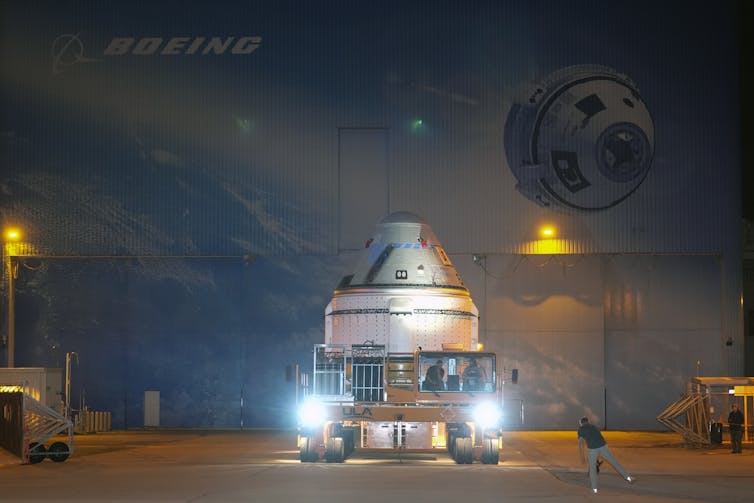Already years late, Boeing’s Starliner spacecraft continues to face delays as it prepares to launch NASA astronauts Butch Wilmore and Suni Williams into space. The latest delay came as a problem with its ride to orbit, an Atlas V rocket, caused the first launch attempt late on May 6, 2024, to be scrubbed.
When it does launch from the Kennedy Space Center, no earlier than May 17, this last crucial test for Starliner will try out the new spacecraft and take the pair to the International Space Station for about a week.
Part of NASA’s commercial crew program, this long-delayed mission will represent the vehicle’s first crewed launch. If successful, it will give NASA – and in the future, space tourists – more options for getting to low Earth orbit.

Suni Williams, right, and Butch Wilmore, the two astronauts who will crew the Starliner test.
AP Photo/Terry Renna
From my perspective as a space policy expert, Starliner’s launch represents another significant milestone in the development of the commercial space industry. But the mission’s troubled history also shows just how difficult the path to space can be, even for an experienced company like Boeing.
Origins and development
Following the retirement of NASA’s space shuttle in 2011, NASA invited commercial space companies to help the agency transport cargo and crew to the International Space Station.
In 2014, NASA selected Boeing and SpaceX to build their respective crew vehicles: Starliner and Dragon.
Boeing’s vehicle, Starliner, was built to carry up to seven crew members to and from low Earth orbit. For NASA missions to the International Space Station, it will carry up to four at a time, and it’s designed to remain docked to the station for up to seven months. At 15 feet, the capsule where the crew will sit is slightly bigger than an Apollo command module or a SpaceX Dragon.
Boeing designed Starliner to be partially reusable to reduce the cost of getting to space. Though the Atlas V rocket it will take to space and the service module that supports the craft are both expendable, Starliner’s crew capsule can be reused up to 10 times, with a six-month turnaround. Boeing has built two flightworthy Starliners to date.

The Starliner capsule in transit.
AP Photo/John Raoux
Starliner’s development has come with setbacks. Though Boeing received US$4.2 billion from NASA, compared with $2.6 billion for SpaceX, Boeing spent more than $1.5 billion extra in developing the spacecraft.
On Starliner’s first uncrewed test flight in 2019, a series of software and hardware failures prevented it from getting to its planned orbit as well as docking with the International Space Station. After testing out some of its systems, it landed successfully at White Sands Missile Range in New Mexico.
In 2022, after identifying and making more than 80 fixes, Starliner conducted a second uncrewed test flight….



